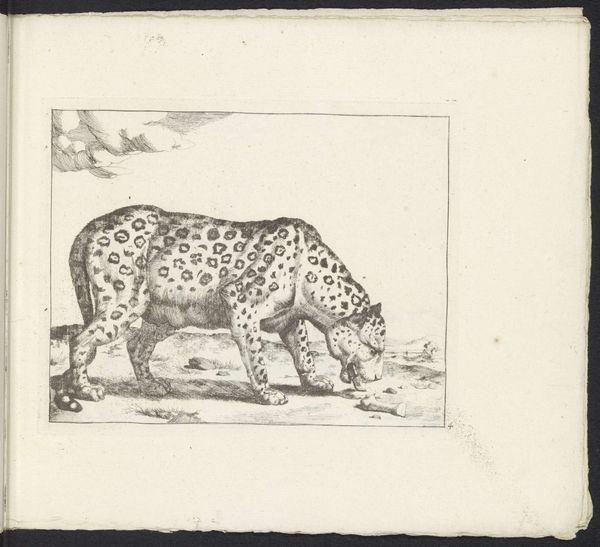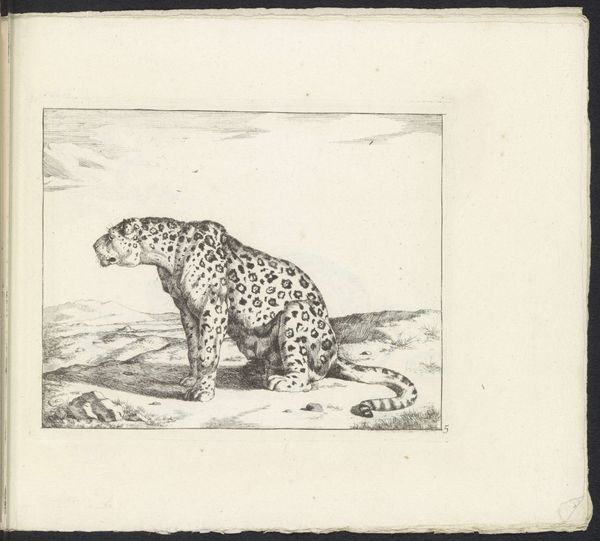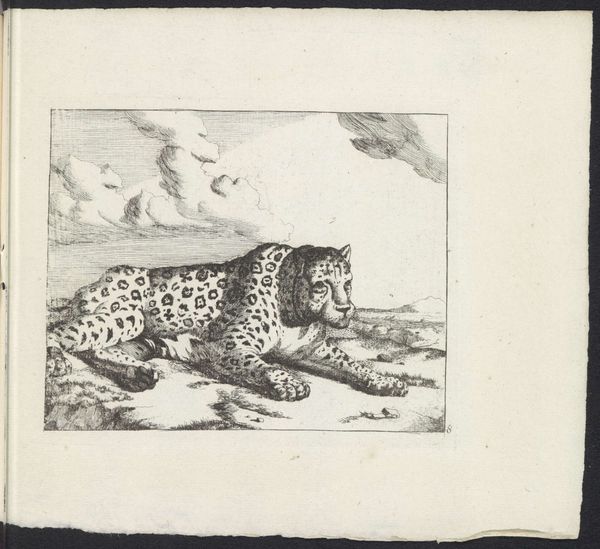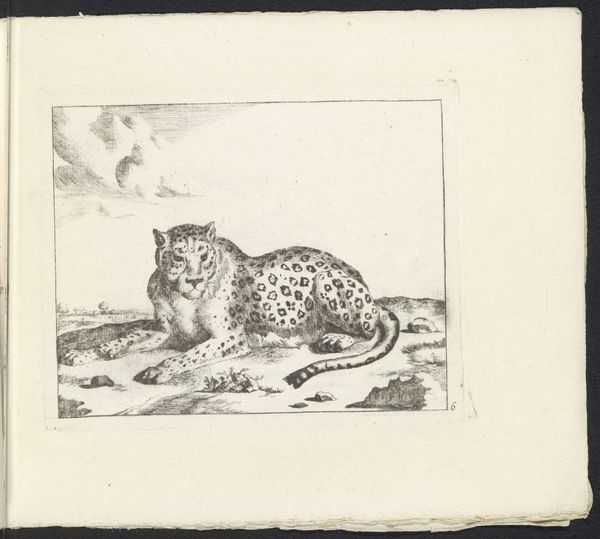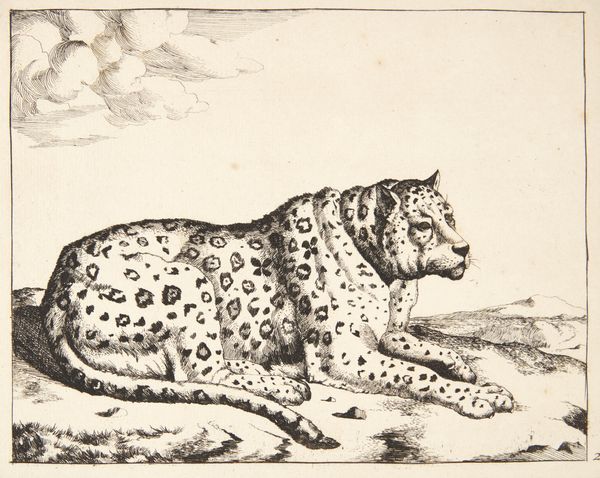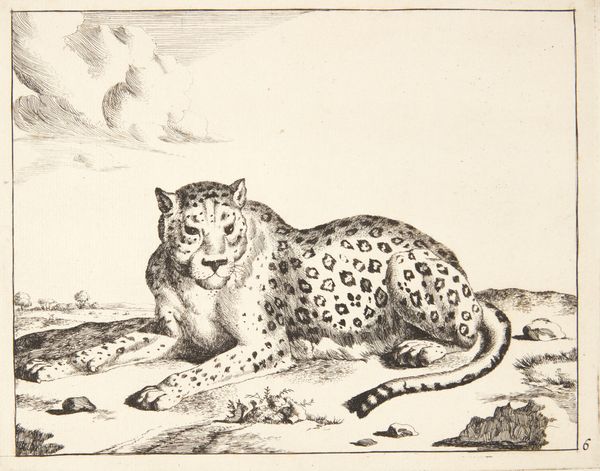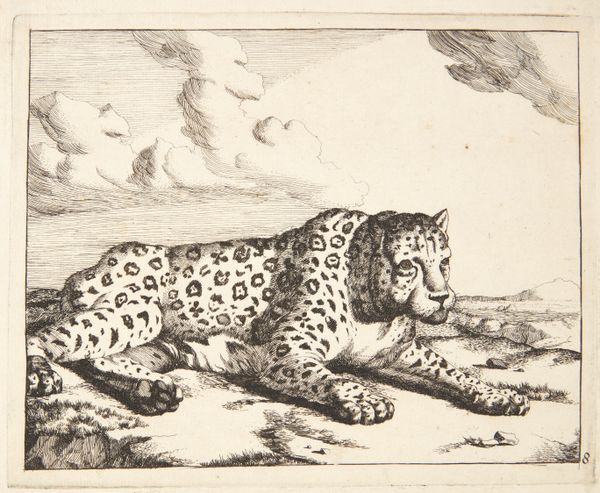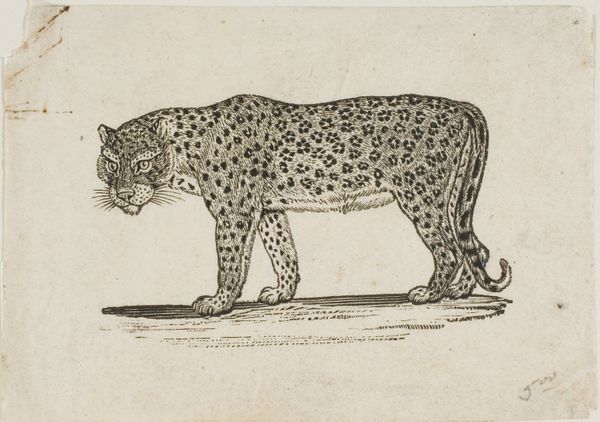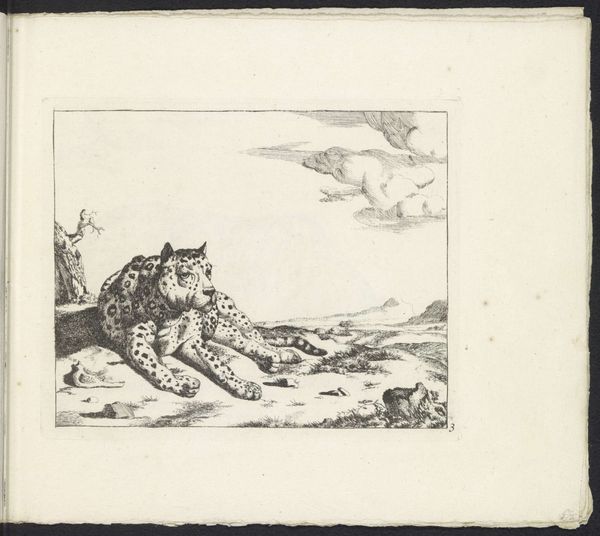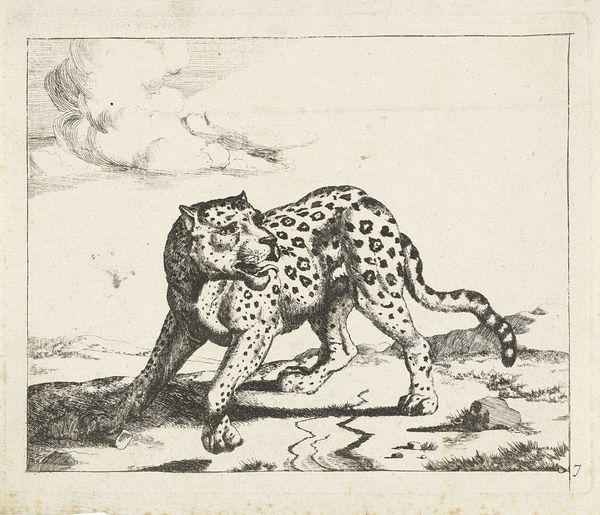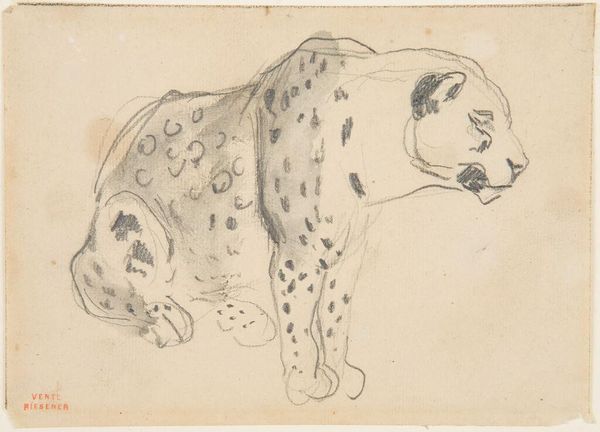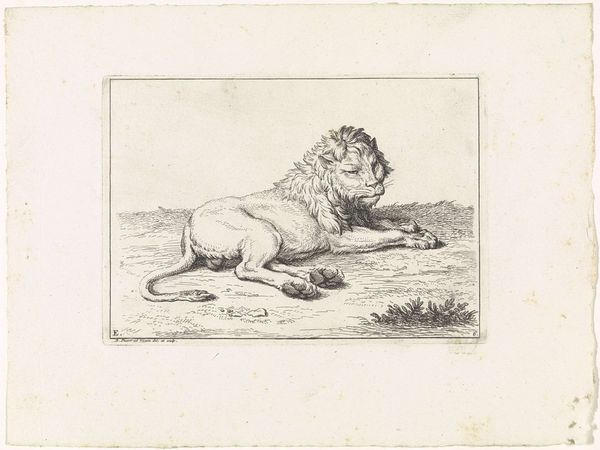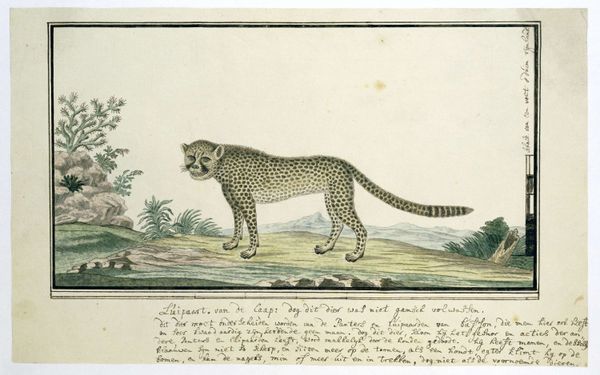
Liggend luipaard, naar rechts, de staart langs het lichaam 1657 - 1677
0:00
0:00
marcusdebye
Rijksmuseum
drawing, ink
#
portrait
#
drawing
#
quirky sketch
#
pen drawing
#
dutch-golden-age
#
pen illustration
#
pen sketch
#
landscape
#
personal sketchbook
#
ink
#
ink drawing experimentation
#
pen-ink sketch
#
pen work
#
sketchbook drawing
#
sketchbook art
#
realism
Dimensions: height 140 mm, width 173 mm, height 210 mm, width 270 mm
Copyright: Rijks Museum: Open Domain
Marcus de Bye etched "Liggend luipaard, naar rechts, de staart langs het lichaam" sometime in the 17th century. During this period, the Dutch Golden Age witnessed not only a flourishing of art but also the expansion of Dutch colonial power. This etching exists within a complex historical context, where the depiction of exotic animals often intersected with colonial narratives and power dynamics. The leopard, rendered with careful detail, may evoke a sense of the exotic and the untamed. Its very presence in European art reflects the reach of Dutch exploration and trade, which brought such images and specimens back to Europe. Consider how the act of depicting the leopard, an animal then largely unfamiliar to Europeans, is itself a form of claiming or knowing the other. Reflect on the emotional weight of seeing an animal that represents both beauty and the reach of colonial influence, and the historical narratives embedded in its representation.
Comments
No comments
Be the first to comment and join the conversation on the ultimate creative platform.
